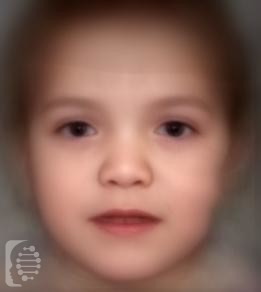What is Larsen syndrome (LRS)?
Larsen syndrome is a rare genetic condition that affects the development of the bones. It may also be referred to as LRS syndrome.
Symptoms may vary between individuals and even between those in the same family.
The main symptom of the syndrome is dislocations of the hips, knees or elbows. It is currently believed to occur in one in every 100,000 newborns, but it is possible that many cases are misdiagnosed or missed.
What gene change causes Larsen syndrome (LRS)?
Mutations in the FLNB gene are responsible for causing the syndrome. It is inherited in an autosomal dominant pattern.
In the case of autosomal dominant inheritance, just one parent is the carrier of the gene mutation, and they have a 50% chance of passing it onto each of their children. Syndromes inherited in an autosomal dominant inheritance are caused by just one copy of the gene mutation.
What are the main symptoms of Larsen syndrome?
Clubfeet are a common feature of the syndrome in affected individuals. An X-ray may also show the presence of small extra bones in the wrists and ankles.
Another syndrome is the tips of fingers, usually the thumbs, are blunt and square-shaped.
Distinctive facial characteristics of the syndrome include a prominent forehead (frontal bossing), widely spaced eyes, and a flattened nose bridge and midface.
Other symptoms involving the affected development of the bones includes a cleft palate and abnormalities in tiny bones within the ear which can cause hearing loss.
Other physical symptoms of the syndrome include short stature and scoliosis.
It is not uncommon for individuals with the syndrome to also experience respiratory problems, and heart and kidney issues.
Possible clinical traits/features:
Cognitive impairment, Beaking of vertebral bodies, Depressed nasal bridge, Hypodontia, Hypoplastic cervical vertebrae, Short stature, Opacification of the corneal stroma, Hypertelorism, Brachydactyly, Dislocated wrist, Knee dislocation, Hip dislocation, Cleft upper lip, Cleft palate, Finger syndactyly, Malar flattening, Craniosynostosis, Cryptorchidism, Elbow dislocation, Conductive hearing impairment, Abnormality of thumb phalanx, Abnormality of the wrist, Bronchomalacia, Anonychia, Aortic dilatation, Arachnodactyly, Cervical kyphosis, Atrial septal defect, Bipartite calcaneus, Accessory carpal bones, Abnormality of the cardiovascular system, Abnormality of epiphysis morphology, Multiple carpal ossification centers, Pectus excavatum, Intellectual disability, Intrauterine growth retardation, Laryngomalacia, Joint laxity, Joint hypermobility, Shallow orbits, Spatulate thumbs, Pectus carinatum, Autosomal dominant inheritance, Respiratory failure, Talipes equinovalgus, Short nail, Spinal cord compression, Talipes equinovarus, Talipes equinovalgus.
How is it diagnosed?
To find out if someone has a diagnosis of Larsen syndrome, it is important to have a consultation and evaluation with a clinical genetic specialist. Specialists may also suggest specific genetic testing or other types of tests to help reach a diagnosis. FDNA’s AI technology can help speed up the diagnostic process by analyzing facial features and other health information.

